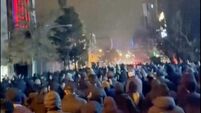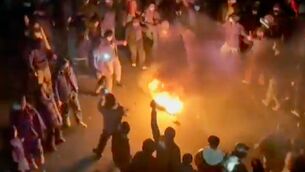Bin Laden's 'encyclopedia of Jihan' gives lesson in terror
Poison gas. Explosives. Hand-to-hand combat.
The 11-volume Encyclopedia of Jihad, or holy war, produced by the Al-Qaida network of Saudi exile Osama bin Laden, makes for a chilling how-to read on what the group calls the ‘‘basic rules of sabotage and terror.’’














